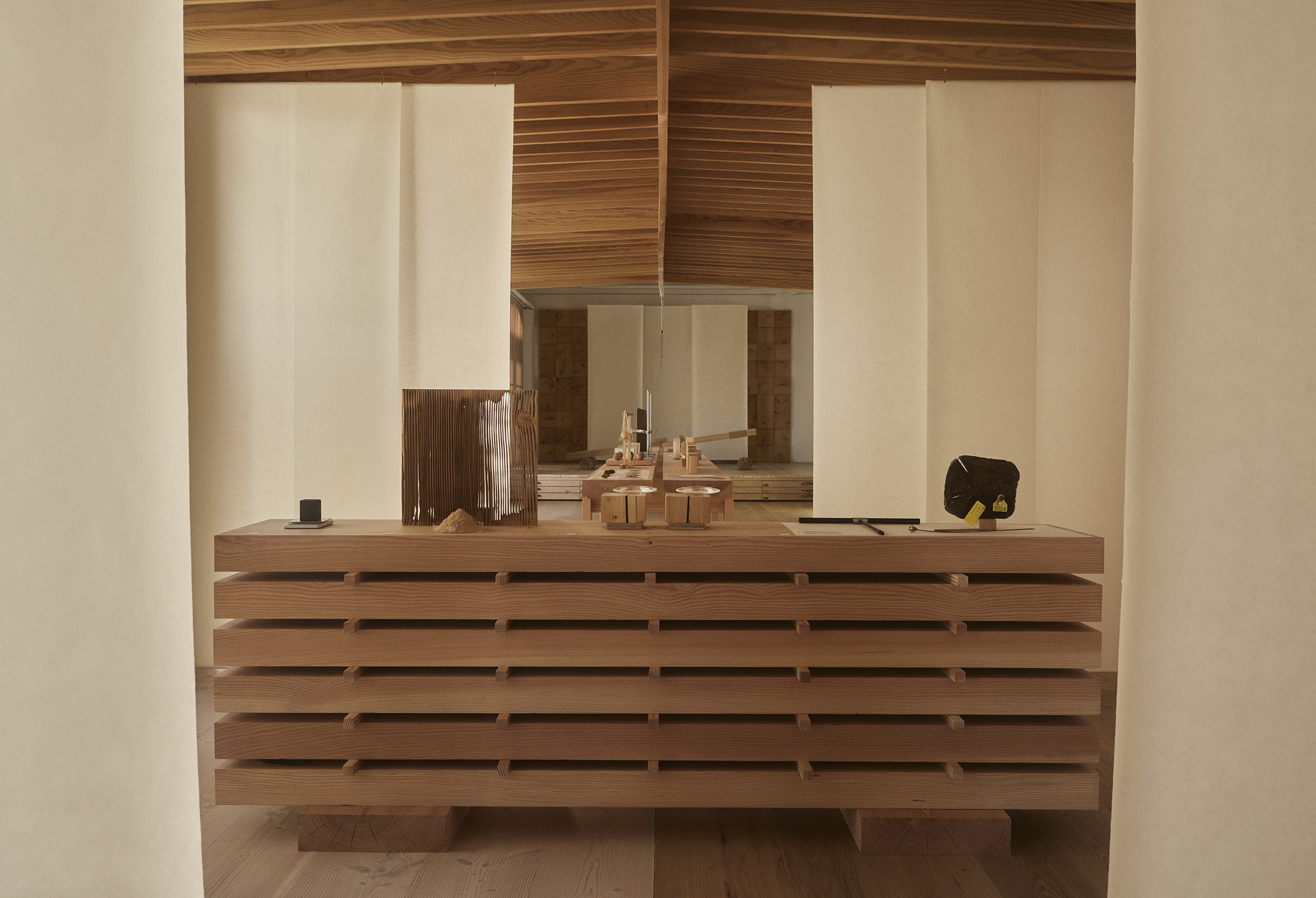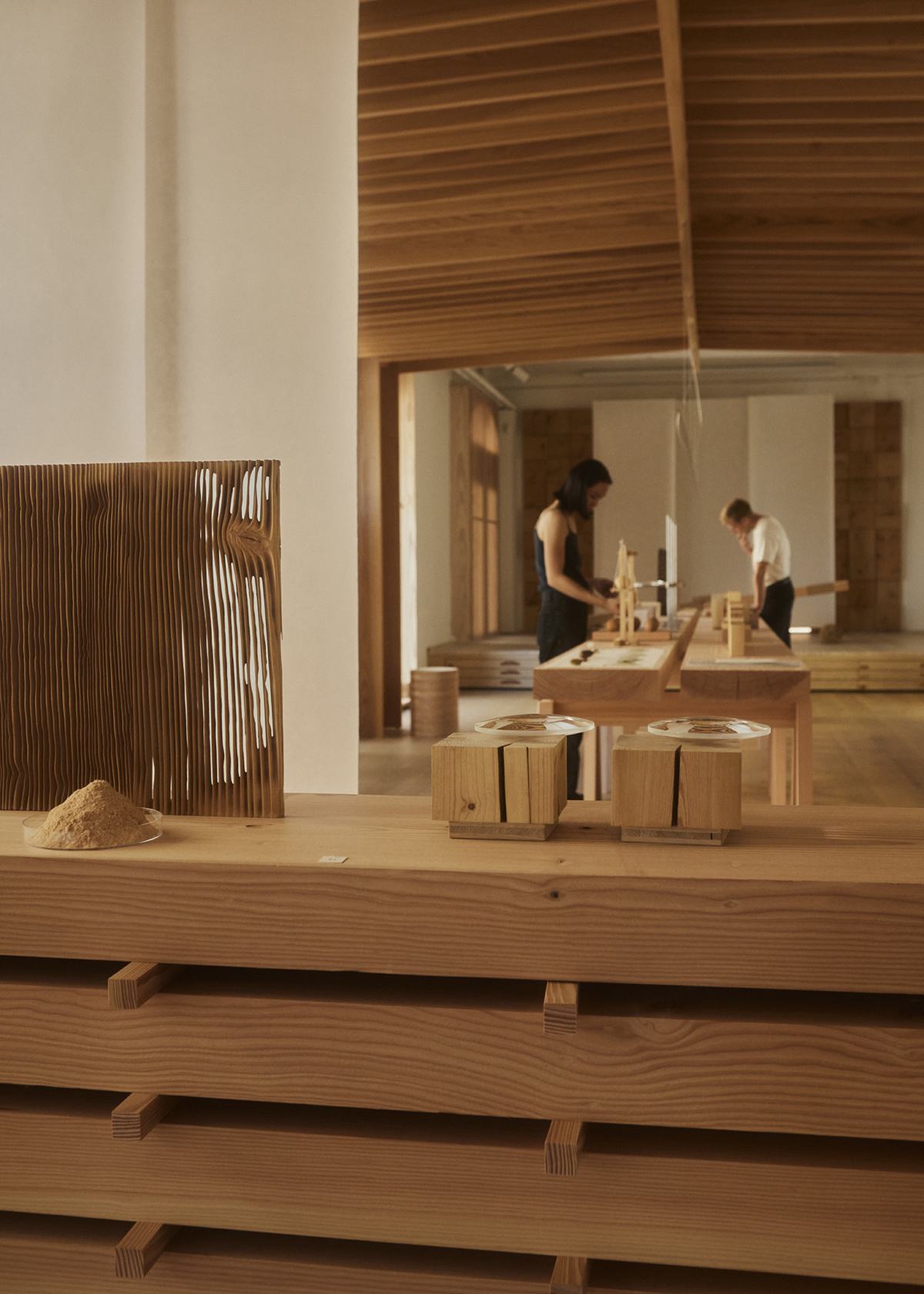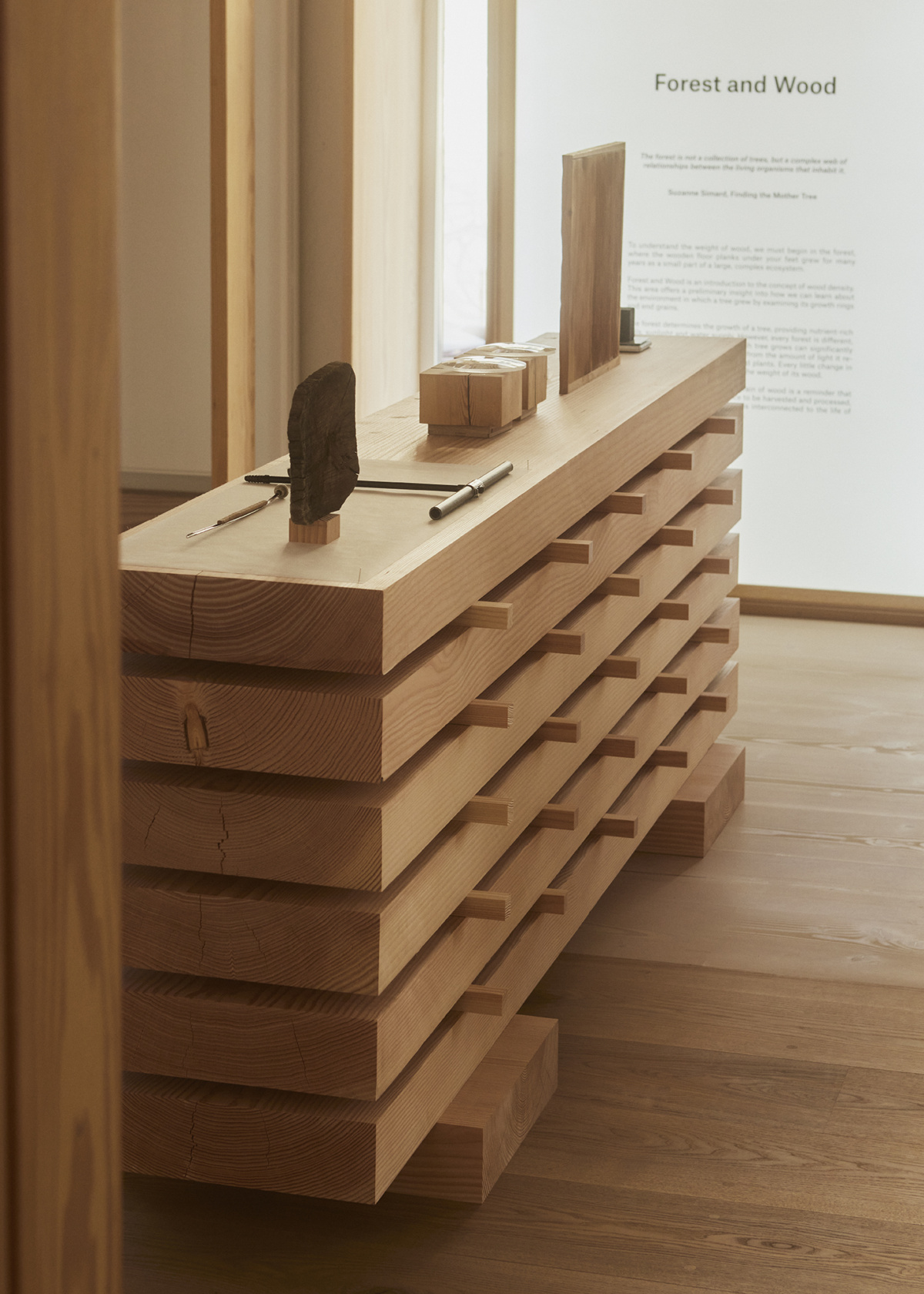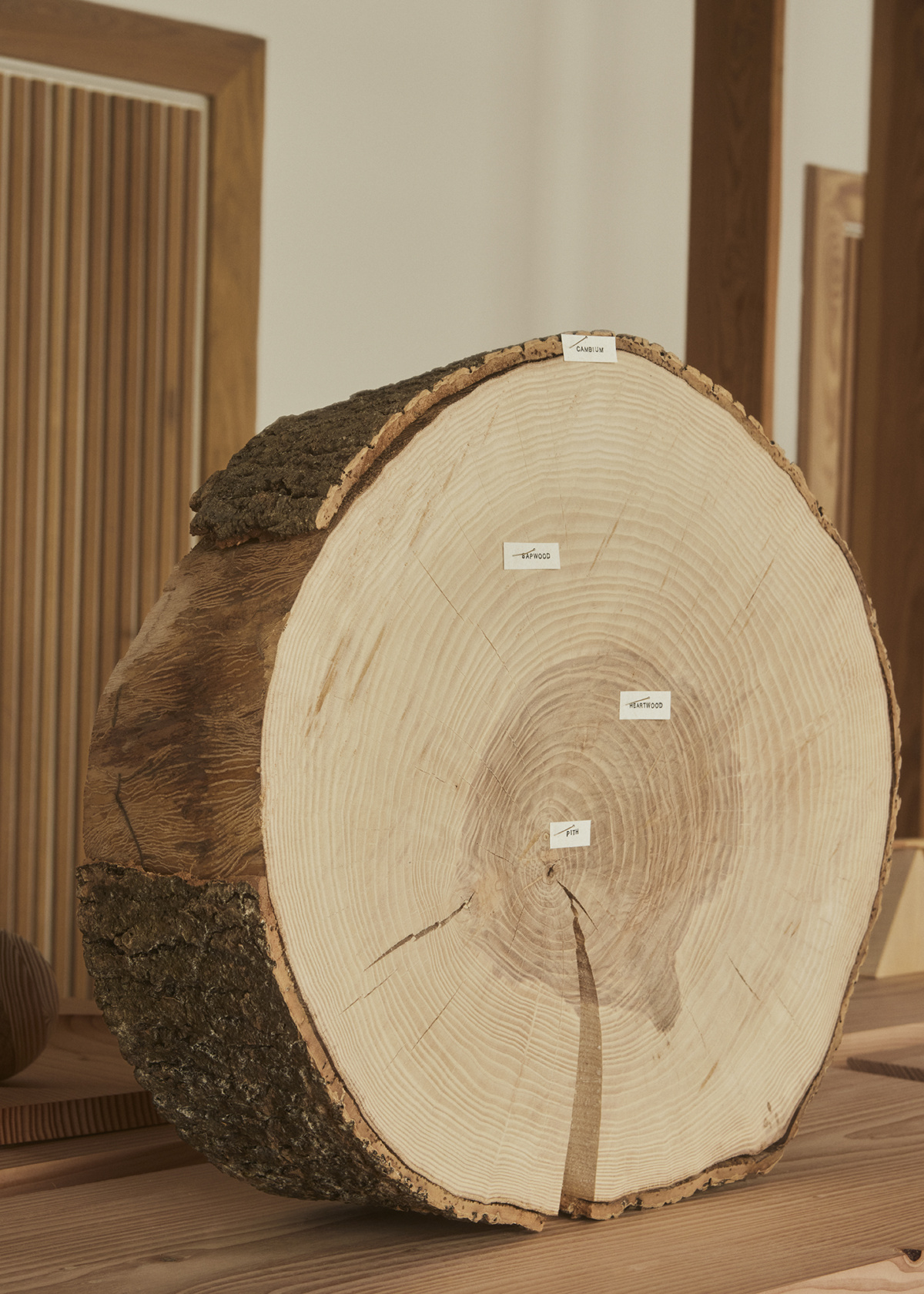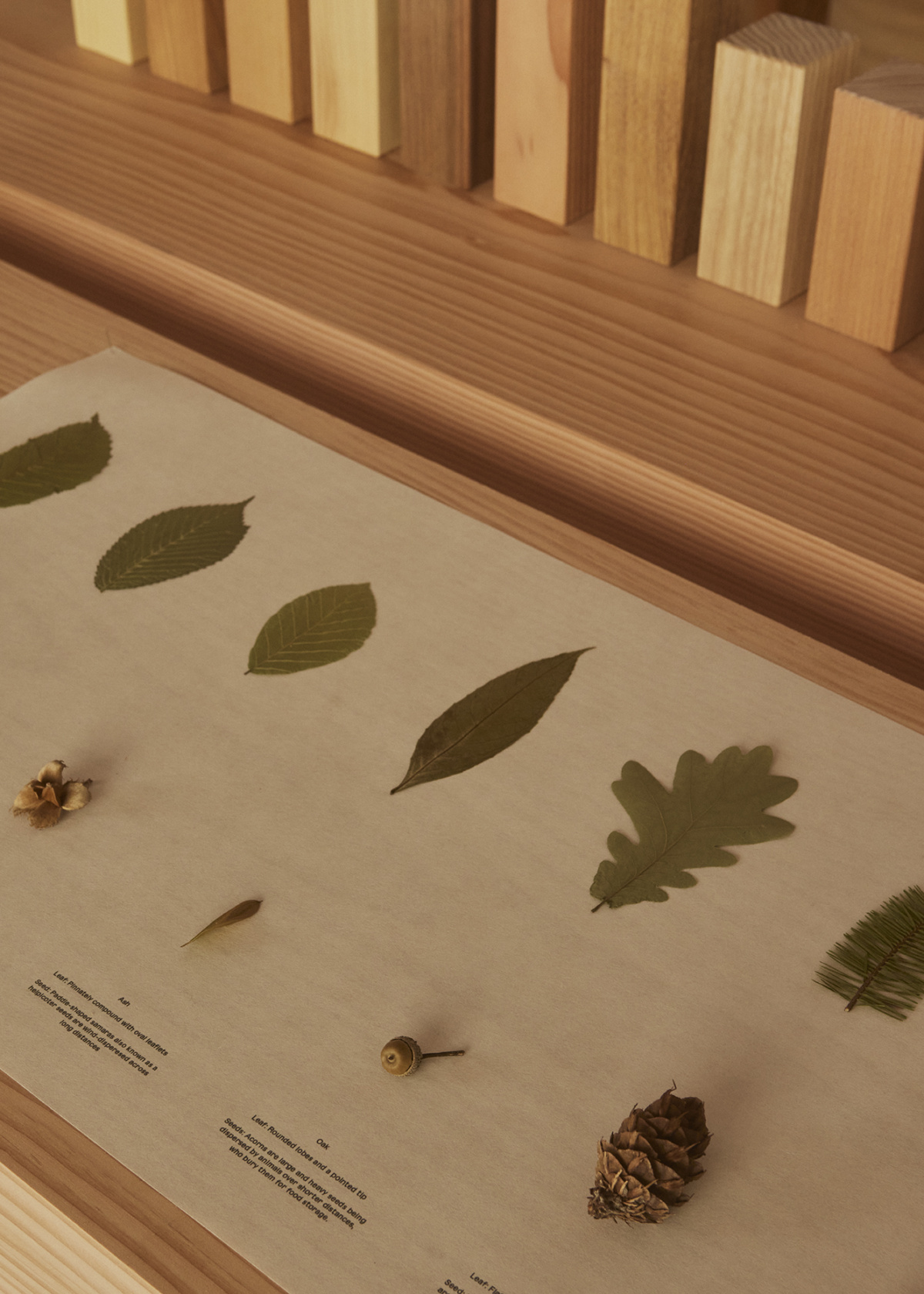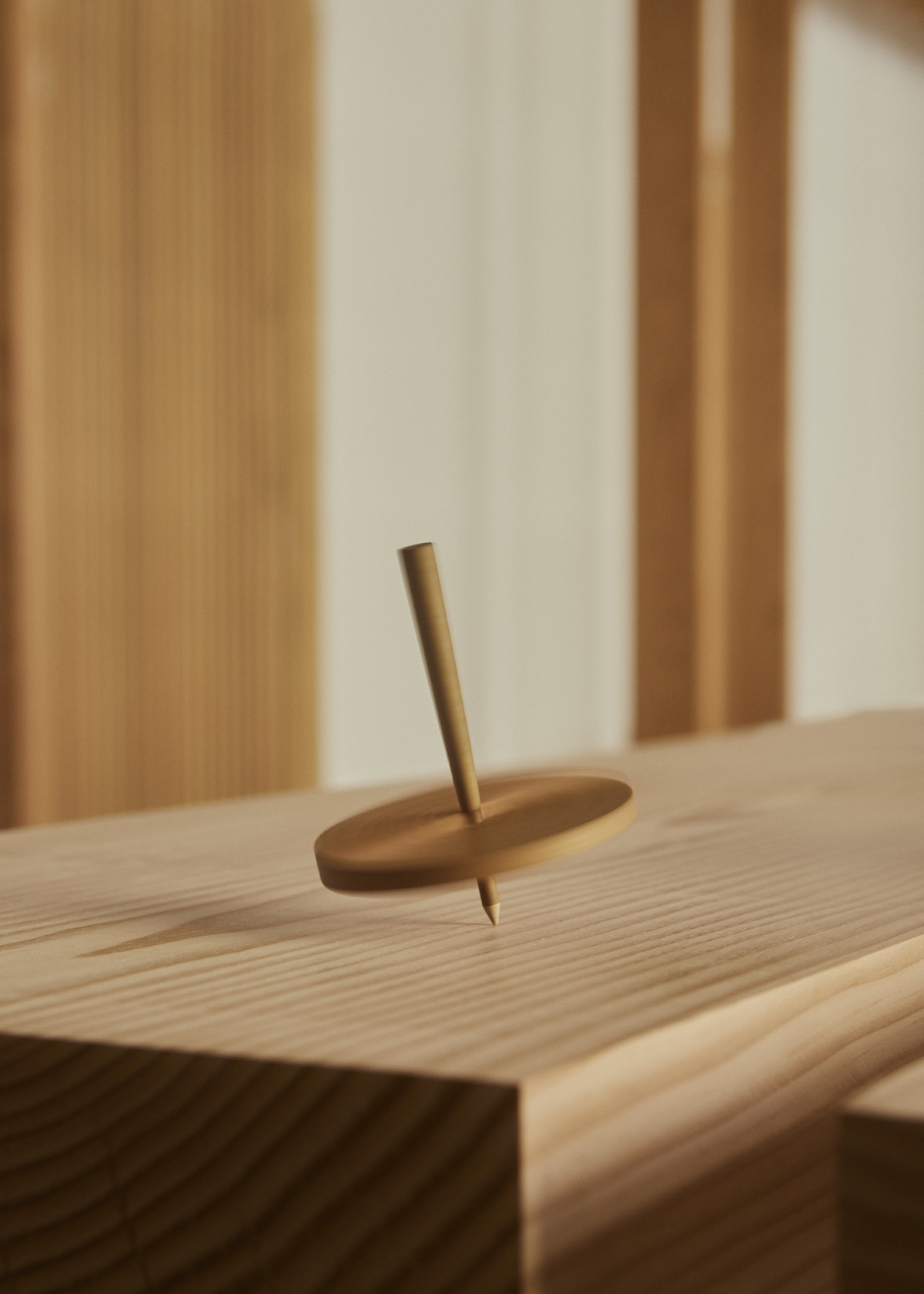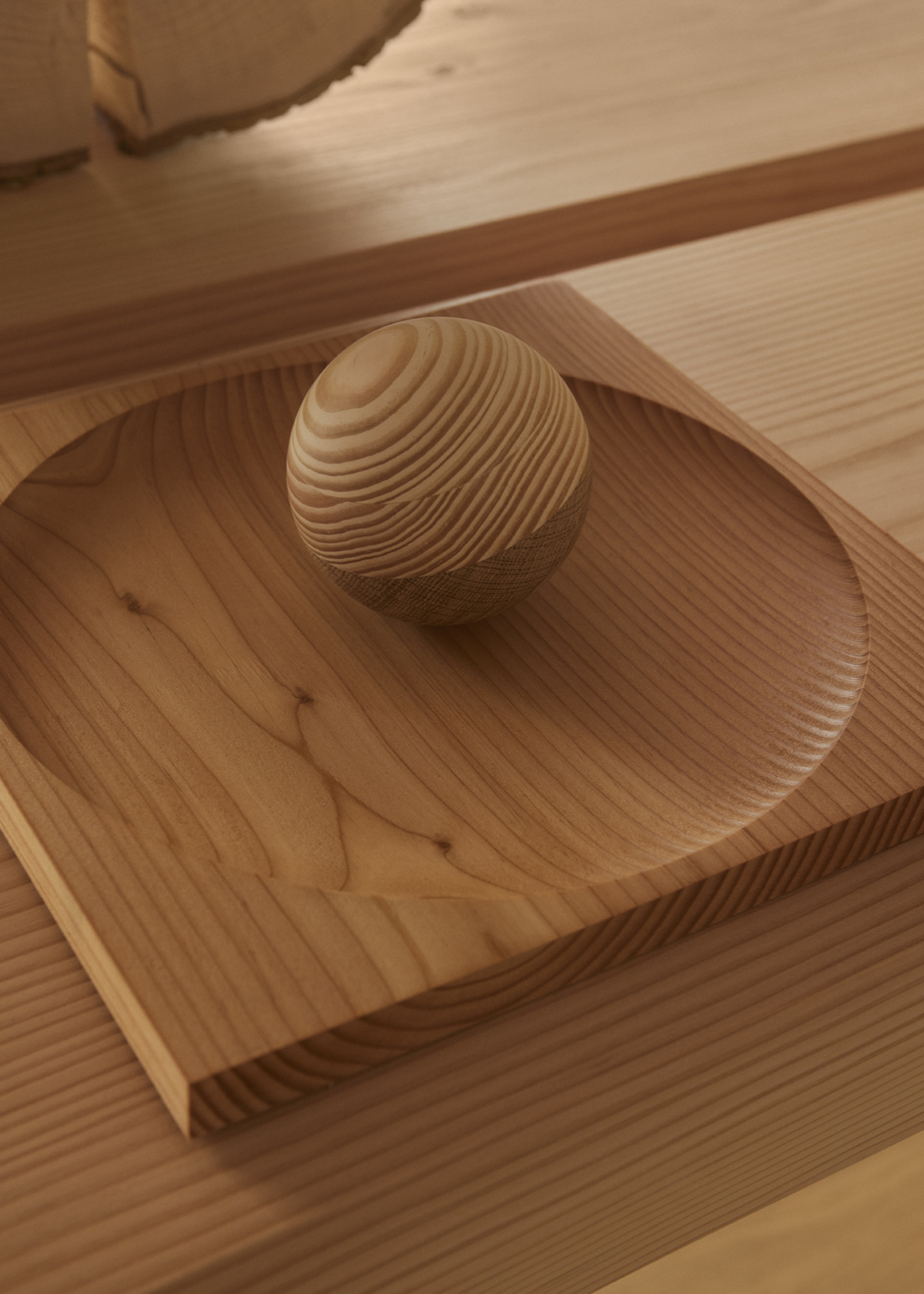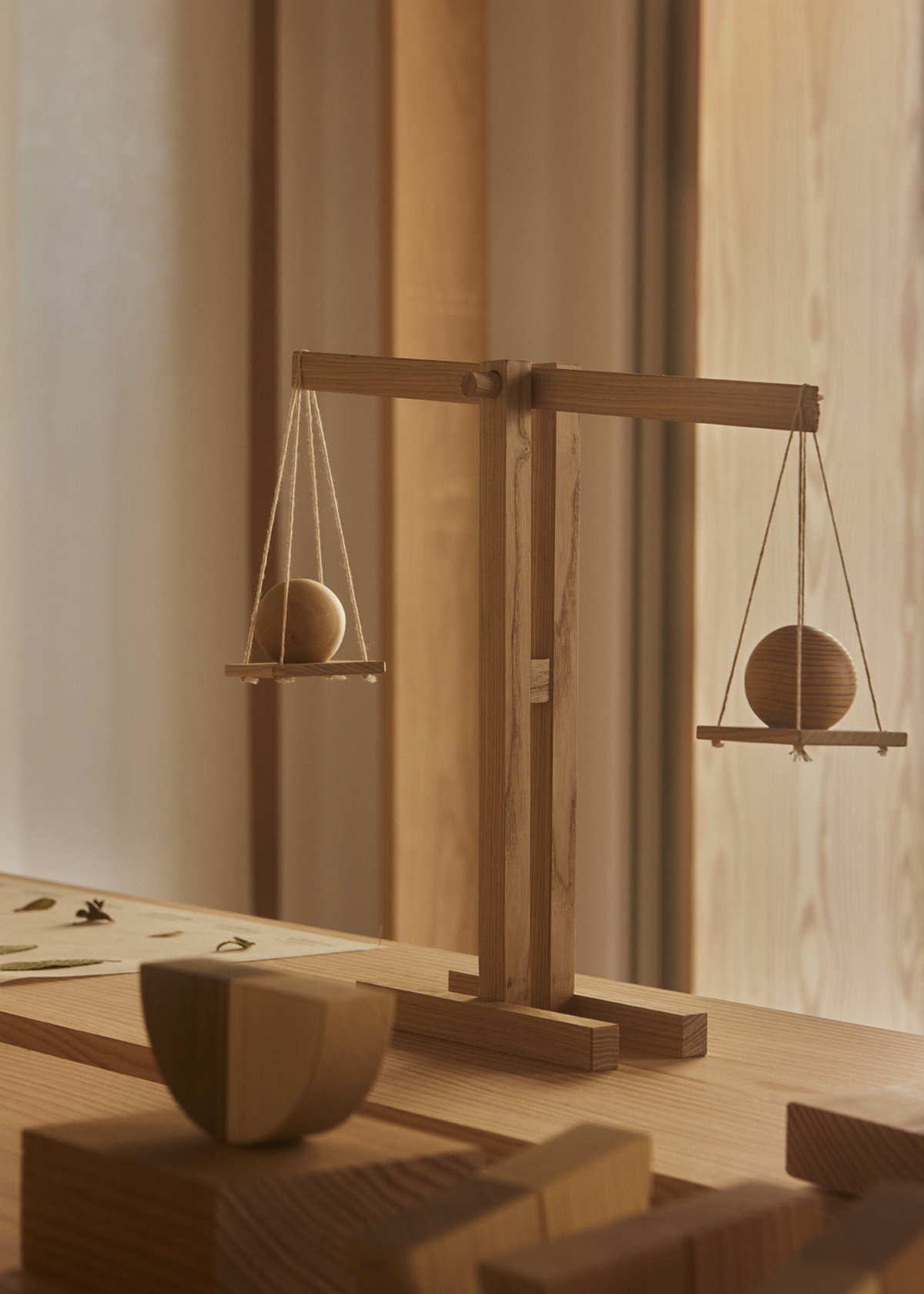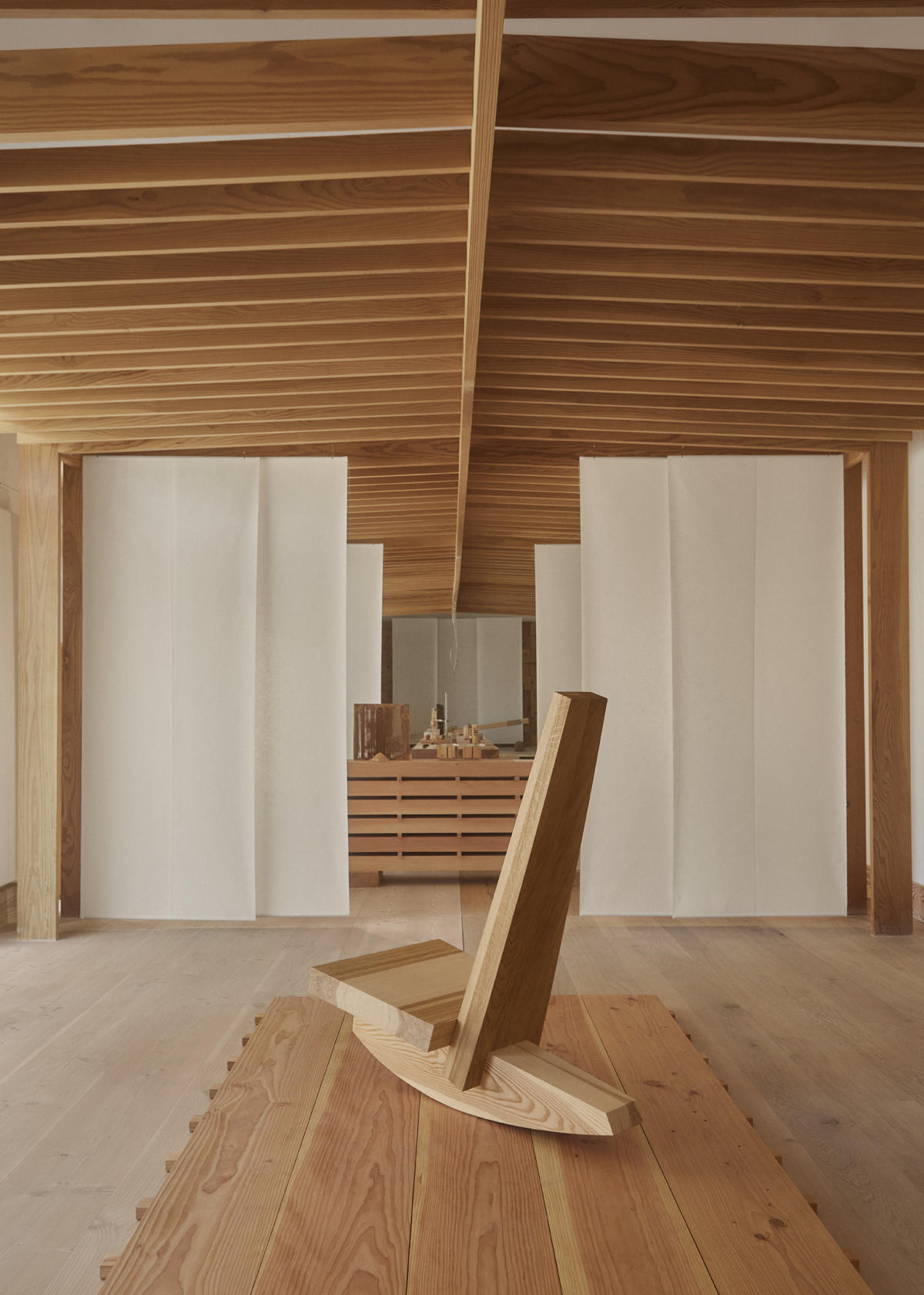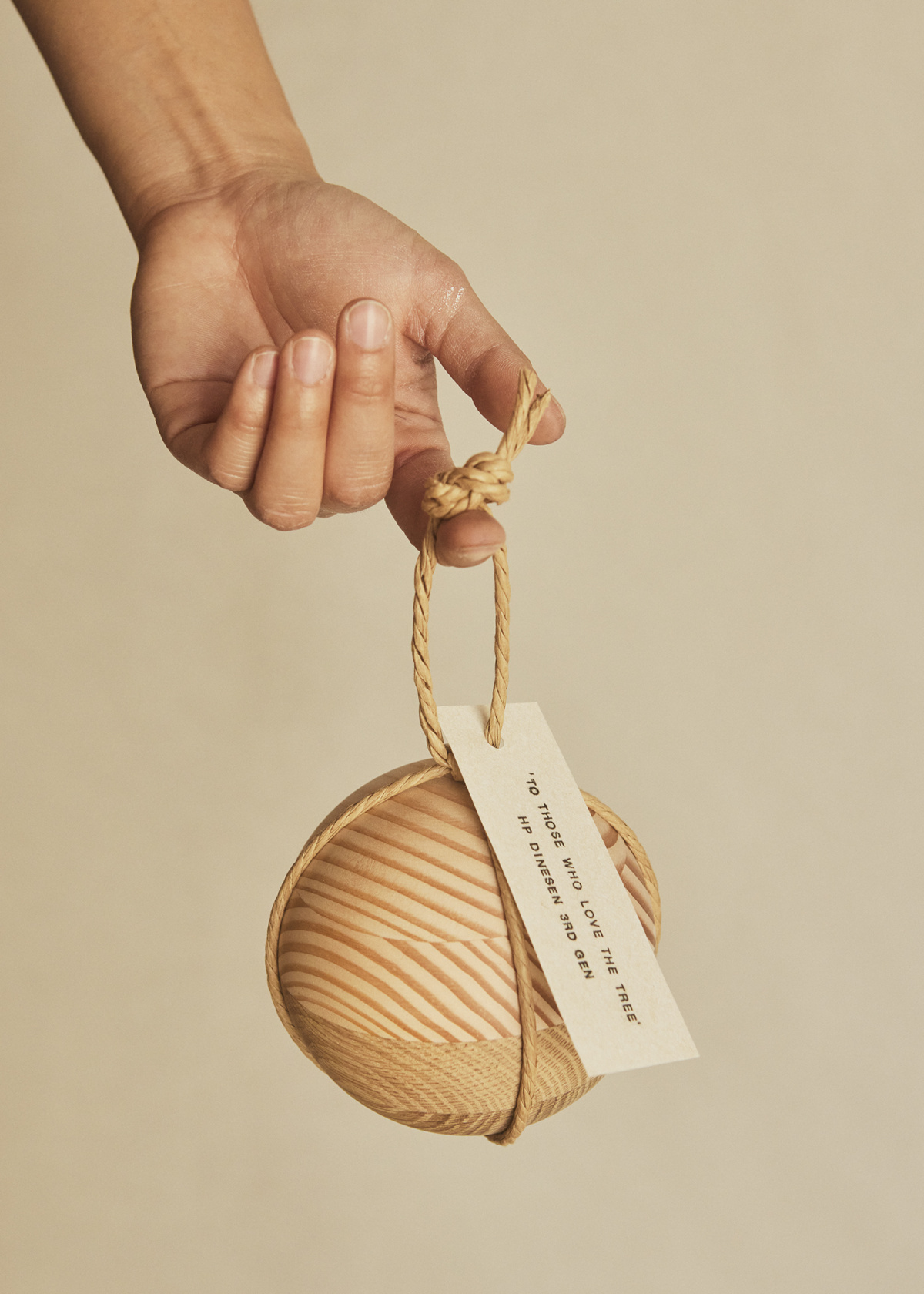Think of Scandinavian design, and you probably picture wood—perfectly steam bent backrests and geometric beech built-ins. In considering wood’s domination in Scandinavian furniture, design duo Christian+Jade realized wood as an omnipresent product has become alienated from the forest and the tree as a living being.
To begin to rectify this disconnect and understand wood as a dynamic character throughout its lifecycle, Christian+Jade partnered with Danish wood flooring company Dinesen to consider the weight of wood, its physical quality of density, to bring more mindfulness to our relationship with the material. The resulting exhibition, The Weight of Wood, was on view throughout 3daysofdesign in Copenhagen at the Dinesen showroom.
- Designers Christian Hammer Juhl and Jade Chan met at the Design Academy Eindhoven, Netherlands.
- They founded their studio in Copenhagen upon graduation with the ethos of using design to transform the way we see objects, spaces, and materials.
“We used weight as a way to dive deeper into wood as a living product, to think about it in a creative and sustainable way and be reminded of its warmth and complexity,” Jade says. In The Weight of Wood, they investigate three relationships: Forest and Wood, Wood and Wood, and Wood and Human.
It begins in the forest. Walking with a friend who works in forestry, Christian and Jade began to consider how the health of a forest relates to its physical characteristics. Soil nutrients, sunlight, water availability, and bug activity all contribute to how a tree grows, and by extension, its density. In the Dinesen showroom, a magnifying glass reveals the rings of a tree, and we can see the tree’s age and the conditions over time. We learn to see the wood as part of a greater ecosystem, something living more than something simply to be used.
- The rings of the tree reveal the stages of its life.
- The exhibition is dedicated “to those who love the tree.”
When considering the wood, we begin to see how its life as a tree impacts its value as a commodity. Christian and Jade note that heavier woods are typically considered higher quality than lighter woods. Their exploration actually started here: with the question of what makes wood precious, and how its life and its value as a commodity are intertwined.
Holding equally sized pieces of pine and oak, you feel the difference in density. In speaking with foresters and carpenters, Christian and Jade discovered that the difference in weight actually goes beyond species. “No two pieces of wood weigh the same, even if they come from the same tree,” Christian says.
- The Wood and Wood section of the exhibition with Dinesen allows visitors to see and interact with the weights of different wood species.
- A spinning top made of different wood species balances as it spins.
In Wood and Wood, Christian and Jade explore these differences. A series of toylike experiments allow us to visualize and interact with the weight of wood: a series of wood blocks of equal weight are different sizes depending on the species. A sphere, half one species and half another, rolls in such a way that reveals the heavier side of the ball. Arcs, scales, spinning tops, pendulums, and more make the weight tangible.
- A ball made of two species leans towards the heavier wood as it rolls in a circle.
- Spheres of different wood species show their heaviness on a delicate scale.
By the time we reach Wood and Human, we have gone full circle: humans use wood, and have always used wood. Christian and Jade reimagine a rocking horse, seesaw, and rocking chair, each with new balance points and ways of play and leisure determined by the weights of the Dinesen Oak, Ash, Douglas, and Pine from which they are constructed.
- The Wood and Human section of the exhibition reimagines common objects like the rocking chair with new emphasis on the balance of the wood.
Christian+Jade spent a month with Dinesen curating the exhibition. As the project culminated at 3daysofdesign, I asked Christian if he feels a particular fondness for any of the varieties they used in the exhibition. He responds that Hornbeam is the most interesting—it’s the heaviest wood they worked with, and is very rarely used today. He wonders why, and wants to find applications where it makes sense. Christian also notes that elm is of particular interest to him as it has grown scarce due to disease.
Whether the duo sticks with wood for a while or moves to the next big project, their deep engagement with wood reveals the ways we can think differently about the world around us, going beyond the acceptance of a common commodity to truly question its role in our lives and in our ecosystem to gain respect for the living world around us.
